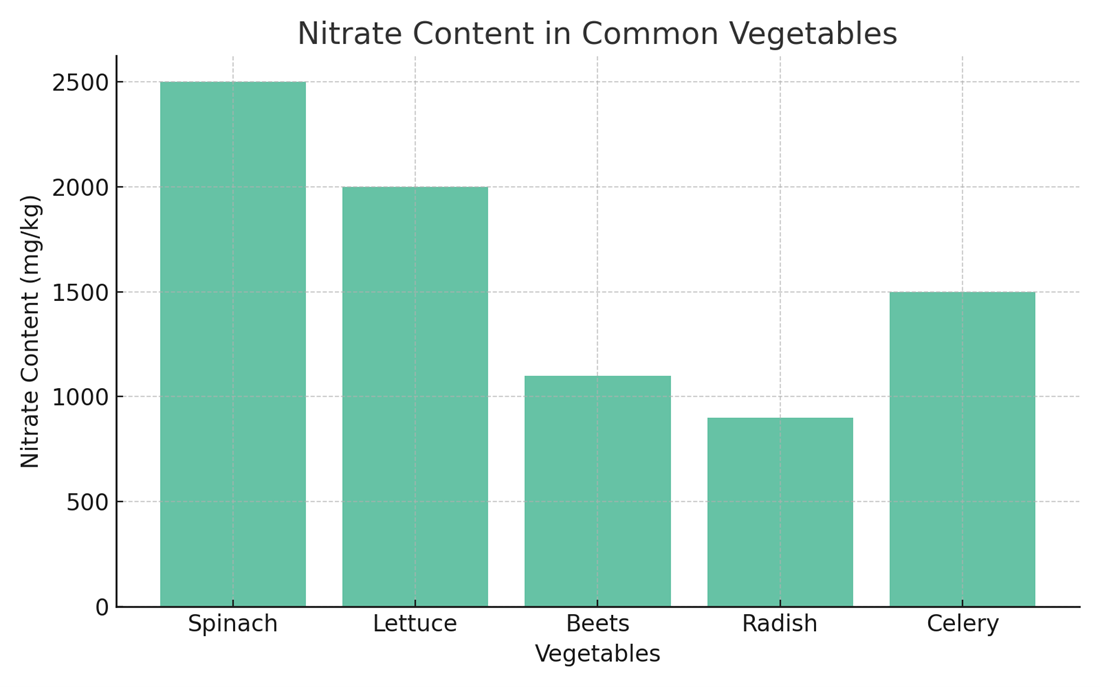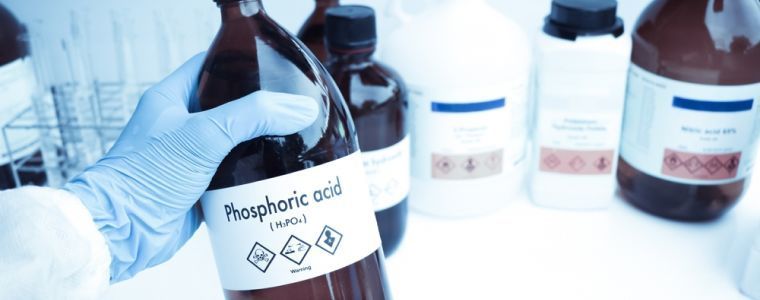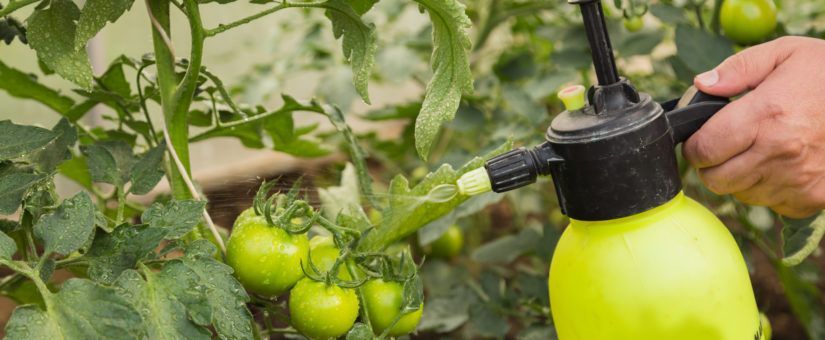Nitrates in Food Preservation: Myths vs. Facts
When it comes to bacon, deli meats and other cured foods, one word often sparks concern: nitrates. For years, these compounds have been at the center of heated debates and alarming headlines, usually blamed for everything from cancer risks to unhealthy diets. It's easy to understand why many consumers are wary; who wouldn't be cautious about something that sounds like a chemical additive lurking in their lunch?
But are nitrates truly dangerous, or are they simply misunderstood?
In this blog post, we’ll cut through the confusion and separate myths from facts. We’ll explore what nitrates actually are, why they're used in food preservation, and what science really says about their safety. Whether you're a health-conscious shopper, a food industry professional, or just curious about what’s in your sandwich, this text will help you better understand the role nitrates play and why the truth may be more nuanced than you think.
As a major distributor of high-quality nitrates across Europe, the Middle East, and Asia, DECACHEM plays a key role in supporting safe and consistent food preservation practices worldwide. With a commitment to quality and compliance, DECACHEM helps ensure that food-grade nitrates meet the highest industry standards.
Historical Context of Nitrate Usage in Food Preservation
The application of nitrates in food preservation can be traced back more than 2,000 years. Ancient civilizations, including the Chinese and Romans, used saltpeter (potassium nitrate) to cure meats, primarily for its ability to prevent spoilage and impart a desirable red-pink color to the meat. However, it was not until the late 19th and early 20th centuries that the underlying chemical mechanisms of nitrate and nitrite action were scientifically elucidated. It became evident that nitrates themselves are relatively inert and exert their preservative effects through microbial or chemical reduction to nitrites.
What Are Nitrates and How Are They Used in Food Preservation?
Nitrates are naturally occurring chemical compounds composed of nitrogen and oxygen (NO₃⁻). They are found throughout nature: in soil, water and many types of food. While often associated with processed meats, nitrates are a normal part of the human diet, especially from vegetables like spinach, lettuce, celery and beets. In fact, the majority of nitrates we consume come from plant sources, not from meat.
Though often used interchangeably, nitrates and nitrites are not the same. Nitrates (NO₃⁻) can convert into nitrites (NO₂⁻) in the body or during food processing. Nitrites are the active compounds that help preserve meats, prevent bacterial growth (particularly Clostridium botulinum), and maintain that appealing pink color in products like bacon and ham. It’s nitrites (not nitrates) that are most directly responsible for the preservative effects, but both play a role in the food industry.
The use of
nitrate compounds in meat preservation dates back centuries. Before refrigeration, curing with
sodium nitrate and salt was one of the few effective ways to keep meats safe and shelf-stable. Over time, the methods evolved, but the role of nitrates and nitrites in extending shelf life and enhancing flavor remained essential.
While cured meats like salami, hot dogs, and ham are well-known examples, nitrates are also found in other food products. Many leafy greens, root vegetables, and even some drinking water contain nitrate additives naturally or through agricultural processes. In modern food production, food preservatives containing nitrates are carefully regulated to ensure consumer safety.
Understanding the science behind these compounds helps demystify their role and offers a more balanced perspective on their presence in our diets.
Common Myths About Nitrates in Food
Myth #1: All Nitrates Are Artificial and Harmful
One of the most common
nitrate myths is the belief that all nitrates are synthetic additives that pose a health risk. In reality,
natural nitrates are abundant in many healthy foods, especially
leafy greens like spinach, arugula and lettuce, as well as
root vegetables such as beets and carrots. These plant-based nitrates are not only safe but are also linked to beneficial effects like improved blood flow and cardiovascular health. The notion that all nitrates are harmful overlooks their
natural origins and essential role in both nutrition and food preservation.
Myth #2: Nitrates Directly Cause Cancer
One of the most prevalent myths is the belief that nitrates and nitrites are carcinogenic and should be completely avoided. This concern arises from the potential for nitrites to form N-nitroso compounds (NOCs), a class of chemicals that includes known carcinogens, under certain conditions, particularly in the acidic environment of the human stomach.
The nitrate cancer myth gained traction due to studies linking processed meats with certain types of cancer, particularly colorectal cancer. However, the concern often lies with nitrosamines, potentially harmful compounds that can form when nitrites react with proteins under high heat (like frying bacon). But this transformation doesn’t happen automatically and it’s not caused by nitrates alone.
In fact, modern food processing standards limit nitrosamine formation through strict controls and by adding ascorbic acid (vitamin C) or other inhibitors that block the chemical reaction. Additionally, the body handles natural nitrates from vegetables differently, with these sources often containing antioxidants that prevent harmful conversions. The science shows that it’s not nitrates or nitrites themselves that are carcinogenic, but rather the specific conditions under which they are transformed - conditions largely controlled in today’s food industry. It's a flawed correlation to equate nitrates with cancer without considering these factors.
Myth #3: “Uncured” Meats Are Nitrate-Free
A growing number of products on grocery shelves are labeled as “uncured meats,” suggesting a healthier, nitrate-free option. However, this is more of a
marketing loophole than a scientific distinction. Instead of using synthetic
nitrate additives, these products often rely on
celery powder or celery juice, which are naturally high in
nitrates. Once processed, they perform the same function as traditional curing agents, preserving meat and enhancing flavor. In essence, “uncured” meats still contain
natural nitrates, making the label somewhat misleading to consumers looking to avoid them.
Scientific Facts Backed by Research
Nitrate Metabolism in the Human Body
When we consume
dietary nitrates, the body processes them in a fascinating and beneficial way. After absorption from the digestive tract, about 25% of these
nitrate compounds are recirculated through the salivary glands. There, oral bacteria convert them into
nitrites, which are then swallowed and further metabolized in the
stomach’s acidic environment.
One of the most important byproducts of this process is nitric oxide - a molecule that plays a crucial role in vascular health. Nitric oxide helps relax blood vessels, improve blood flow and regulate blood pressure. It’s also involved in immune defense and cellular signaling. Far from being merely food additives, natural nitrates (especially from vegetables) are now recognized for their potential cardiovascular and performance-enhancing benefits, thanks to their role in nitrate metabolism and nitric oxide production.
Evidence-Based Benefits and Risk Management
While excessive intake of nitrates and nitrites can be harmful, particularly in infants, where nitrites may cause methemoglobinemia - a condition that affects oxygen transport in the blood, regulated use within prescribed limits poses minimal risk to the general population. In fact, there is emerging evidence suggesting potential cardiovascular benefits of dietary nitrates, especially from vegetable sources. Nitrates act as precursors to nitric oxide (NO), a key signaling molecule involved in vasodilation, blood pressure regulation and endothelial function.
What Does Research Say About Nitrates and Health Risks?
The conversation around nitrates took a serious turn when the World Health Organization (WHO) classified processed meats as possibly carcinogenic in 2015, due in part to concerns about nitrosamine formation from nitrite additives. However, the WHO also emphasized that the actual risk depends heavily on overall dietary context, portion size and lifestyle factors.
Studies have shown that nitrates from vegetables, which are accompanied by antioxidants like vitamin C, tend to inhibit the harmful chemical reactions that can lead to nitrosamine formation. Additionally, the total intake from cured meats is generally much lower than from vegetables, yet the former is often more vilified.
Other research supports the benefits of dietary nitrates, particularly their role in lowering blood pressure, improving exercise performance and reducing inflammation. These findings highlight that the source of nitrates (processed meat vs. vegetables), the presence of other nutrients and how often such foods are consumed play key roles in assessing real health impacts.
In summary,
nitrate metabolism is more nuanced than headlines suggest. When consumed in a balanced diet, nitrates can contribute to health rather than harm.

Nitrates in Natural Foods vs. Processed Meats
When people hear the word nitrates, they often think of processed meats like bacon or ham. But what may surprise many is that nitrates in some vegetables are present in much higher amounts than in cured meats. For example, spinach can contain between 250 to 3,500 mg of nitrates per kilogram, while bacon typically contains around 10 to 50 mg per kilogram, depending on processing regulations.
This dramatic difference highlights a key point: not all nitrate sources are equal. Vegetables like spinach, arugula and beetroot are rich in nitrates, yet they’re also packed with synergistic compounds such as vitamin C, polyphenols and fiber. These natural antioxidants help prevent the conversion of nitrates into harmful nitrosamines, effectively reducing health risks and often delivering cardiovascular benefits instead.
On the other hand, nitrates in processed meats are typically added through curing salts, and while modern formulations often include inhibitors like ascorbic acid, the nutrient profile of meat lacks the protective synergy found in plant foods. Moreover, the method of preparation (such as high-heat cooking) can increase the potential for nitrosamine formation in meats, which is not an issue with most vegetables.
That’s why context matters when evaluating nitrate consumption. It’s not just about the nitrate content, it’s about what else comes with it. A plate of leafy greens offers health-promoting compounds alongside nitrates, while a heavily processed meat product may not.
Understanding the difference in
nitrate content in spinach vs. bacon helps shift the conversation from fear to facts. Instead of avoiding nitrates altogether, it’s more important to consider
their source, accompanying nutrients and overall dietary patterns when assessing their role in health.
Regulatory Standards and Safety Guidelines
To ensure consumer safety, both the FDA (U.S. Food and Drug Administration) and EFSA (European Food Safety Authority) have established strict guidelines for the use of nitrate and nitrite additives in food products. These regulations set maximum allowable levels based on scientific assessments of health risks and average dietary exposure.
For example, the FDA nitrate limit for sodium nitrate in cured meats is typically capped at 500 parts per million (ppm), while sodium nitrite is limited to 200 ppm. The EFSA uses similar thresholds, also defining an Acceptable Daily Intake (ADI) of 3.7 mg of nitrates per kilogram of body weight.
On food labels, consumers can identify nitrate and nitrite additives by their E-numbers:
● E249 – Potassium nitrite
● E250 – Sodium nitrite
*These may appear on labels of products like bacon, ham, sausages, and canned meats.
To comply with nitrate regulation, food manufacturers closely monitor additive levels using precise formulation and routine quality checks. They also include inhibitors like ascorbic acid (vitamin C) to reduce potential nitrosamine formation. With strict oversight and improved processing methods, today’s use of E250 nitrite and other additives is far more controlled and safer than in the past.
Should You Avoid Nitrates? A Balanced Perspective
When it comes to nitrate safety, it’s important to take a balanced view. While excessive consumption of processed meats containing nitrates and nitrites may raise some health concerns, particularly when paired with high-heat cooking methods, not all nitrates are harmful and many actually offer benefits. Dietary nitrates from vegetables are linked to positive effects like improved blood flow and reduced blood pressure, thanks to their role in nitric oxide production.
The key is moderation. You don’t need to completely avoid nitrates, but it’s wise to be mindful of the source. Limit your intake of heavily processed, nitrate-rich meats, especially those cooked at high temperatures. At the same time, feel confident including nitrate-rich vegetables like spinach, beets and arugula as part of a balanced diet.
Here are a few tips for smarter consumption:
● Check food labels for additives like
E249
and E250.
● Pair nitrate-rich foods with
vitamin C sources (like citrus or peppers) to block nitrosamine formation.
● Focus on whole foods over processed products when possible.

Ultimately, nitrate health advice comes down to understanding the bigger picture: source, quantity and dietary context all matter. In moderation, nitrates can safely fit into a healthy, varied diet.
FAQs About Nitrates in Food Preservation
Are nitrates safe during pregnancy?
Nitrates from natural sources like vegetables are considered safe during
pregnancy and can even provide health benefits. However, it is advised to limit intake of processed meats with added nitrates and nitrites to reduce potential risks.
Can cooking reduce nitrate content?
Cooking, especially at high temperatures, can reduce the nitrate content in foods, but it does not eliminate nitrates entirely. The reduction is more significant in foods like vegetables, where nitrates are converted into nitrites, especially during processes like boiling or blanching.
Are organic foods nitrate-free?
Organic foods can still contain nitrates, particularly from fertilizers, but they often have lower levels compared to conventionally grown crops. The presence of nitrates in organic foods depends on factors like soil and farming practices, not just the label.
What are nitrate-free meat alternatives?
Nitrate-free meat alternatives include plant-based options like
tofu, tempeh or
seitan, which naturally contain no nitrates. Some brands also offer
nitrate-free processed meats made from plant-based ingredients or meats that are naturally cured without nitrates or nitrites.
Contact DECACHEM
At DECACHEM, we are committed to providing high-quality nitrates for a variety of applications, including food preservation and industrial use. Whether you're in the food industry looking for safe, food-grade nitrates or need reliable industrial-grade nitrate solutions, our team is here to help. With years of experience and a focus on quality and safety, DECACHEM is your trusted partner for all nitrate-related needs. Contact us today to learn more about our products and how we can support your business with top-tier nitrate solutions.
















